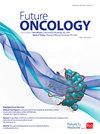达拉单抗联合来那度胺、硼替佐米和地塞米松治疗新诊断多发性骨髓瘤患者的GRIFFIN研究最终分析摘要。
IF 2.6
4区 医学
Q2 ONCOLOGY
引用次数: 0
摘要
本摘要介绍了 GRIFFIN 研究的最终分析结果。在这项研究中,参与者都是新诊断出患有一种叫做多发性骨髓瘤的血液和骨髓癌症,从未接受过任何治疗,并且能够接受自体干细胞移植。GRIFFIN研究考察了在诱导和巩固治疗阶段,将达拉单抗(D)添加到被称为RVd(来那度胺[R]、硼替佐米[V]和地塞米松[d])的标准治疗组合中,然后进行达拉单抗和来那度胺(D-R)维持治疗。参与者还接受了自体干细胞移植,以进一步帮助减轻多发性骨髓瘤。GRIFFIN研究考察了D-RVd后D-R维持治疗与RVd后R维持治疗相比,是否能更好地杀死多发性骨髓瘤细胞,以及治疗是否安全。本摘要还介绍了另外两篇GRIFFIN论文的结果:其中一篇研究了具有某些多发性骨髓瘤特征或人口统计学因素的参与者,这些特征或因素与较差的预后有关;另一篇研究了治疗对参与者生活质量的影响:在对 GRIFFIN 进行最终分析时,与接受标准 RVd 治疗和 R 维持治疗的参与者相比,接受 D-RVd 治疗和 D-R 维持治疗的参与者体内多发性骨髓瘤细胞和多发性骨髓瘤标志物(生物学标志)的水平非常低(检测不到),而且他们更有可能存活,多发性骨髓瘤不会恶化或复发。有可能出现更坏结果的参与者也获得了类似的益处。此外,接受 D-RVd 治疗后再接受 D-R 维持治疗的参与者报告说,他们的疼痛减轻了,疲劳(极度疲劳)减少了,进行日常体力活动的能力提高了。虽然D-RVd的一些副作用(治疗中不希望或意想不到的效果)更高,但两组的副作用都在预期范围内,而且添加达拉单抗并不会降低参与者接受治疗的能力:GRIFFIN研究结果表明,对于新诊断为多发性骨髓瘤并能接受自体干细胞移植的成人患者,D-RVd治疗后D-R维持治疗比RVd治疗后R维持治疗的标准治疗方法治疗多发性骨髓瘤的效果更好,而且治疗没有出现意外的副作用:临床试验注册:NCT02874742(GRIFFIN)(ClinicalTrials.gov)。本文章由计算机程序翻译,如有差异,请以英文原文为准。
A plain language summary of the final analysis of the GRIFFIN study of daratumumab plus lenalidomide, bortezomib, and dexamethasone for people with newly diagnosed multiple myeloma.
求助全文
通过发布文献求助,成功后即可免费获取论文全文。
去求助
来源期刊

Future oncology
ONCOLOGY-
CiteScore
5.40
自引率
3.00%
发文量
335
审稿时长
4-8 weeks
期刊介绍:
Future Oncology (ISSN 1479-6694) provides a forum for a new era of cancer care. The journal focuses on the most important advances and highlights their relevance in the clinical setting. Furthermore, Future Oncology delivers essential information in concise, at-a-glance article formats - vital in delivering information to an increasingly time-constrained community.
The journal takes a forward-looking stance toward the scientific and clinical issues, together with the economic and policy issues that confront us in this new era of cancer care. The journal includes literature awareness such as the latest developments in radiotherapy and immunotherapy, concise commentary and analysis, and full review articles all of which provide key findings, translational to the clinical setting.
 求助内容:
求助内容: 应助结果提醒方式:
应助结果提醒方式:


